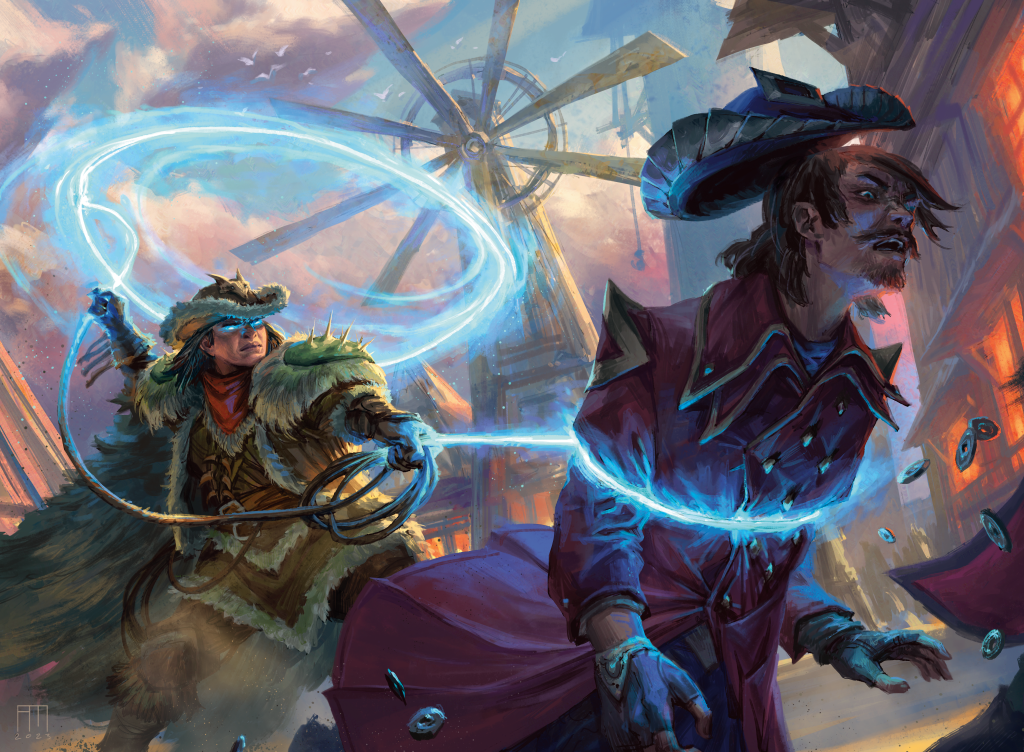
When playing Magic: The Gathering (MTG), sideboarding is a crucial aspect that can significantly impact the outcome of your matches. In my experience as an Aggro deck player, I list down sideboard cards that are good to draw in the midgame and late game and can give either card advantage, or board advantage in the matchup. However, comparing the card to align with your deck’s game plan can be quite a challenge, especially against Midrange decks where opponents play a combination of creatures and powerful spells.
Here are some detailed side boarding tips for an Aggro deck facing a Midrange opponent:
Understanding the Matchup
Aggro Deck
- Goal: Win quickly by dealing damage as fast as possible.
- Strengths: Speed, efficiency, and overwhelming early-game pressure.
- Weaknesses: Vulnerable to removal and board wipes, can run out of steam.
Midrange Deck
- Goal: Survive the early game, stabilize, and then dominate with powerful mid-to-late-game threats.
- Strengths: Versatility, resilience, and high-value threats.
- Weaknesses: Can be slow to start, susceptible to fast, aggressive strategies.
Sideboarding Strategy
Key Considerations
- Board Wipes: Midrange decks often use board wipes. Consider how to mitigate this.
- Removal: They have efficient removal spells. Protect your key threats.
- Card Advantage: Midrange can out-grind you. Maintain pressure and avoid running out of gas.
Cards to Consider Bringing In
- Resilient Threats
- Self-Returning Creatures: Cards like Scrapheap Scrounger or Razorlash Transmogrant that can return from the graveyard.
- Hexproof/Shroud Creatures: Creatures like Thrun, Breaker of Silence or Vein Ripper that are harder to remove.
- Burn Spells
- Direct Damage: Cards like Lightning Bolt, Skewer the Critics, or Lava Spike to push through the last points of damage.
- Removal: Cards like Lithomantic Barrage, Brotherhood’s End, or Lightning Strike to remove key blockers.
- Disruption
- Hand Disruption: Cards like Duress or Thoughtseize to strip away their removal or board wipes.
- Taxing Effects: Cards like Thalia, Guardian of Thraben to slow down their spells.
- Anthems and Buffs
- Permanent Buffs: Cards like Gideon, Ally of Zendikar or Benalish Marshal to make your creatures bigger and more resilient.
- Instant Buffs: Combat tricks like Boros Charm to protect against board wipes and push damage through.
- Graveyard Hate
- Hate Cards: Cards like Rest in Peace or Tormod’s Crypt to prevent them from recurring threats or using graveyard synergies.
Cards to Consider Taking Out
- Low Impact Creatures
- Creatures that don’t contribute significantly to your overall game plan or are easily removed.
- Excessive Mana Sources
- Cutting down on lands or mana ramp if you’re on a low curve and need more action.
- Situational Spells
- Spells that don’t perform well against midrange strategies or are too slow.
Playstyle Adjustments
- Early Pressure: Maintain early aggression but be mindful of overcommitting into a potential board wipe.
- Hand Disruption: Use hand disruption to strip away their key removal or threats.
- Combat Tricks: Use instant-speed buffs and protection spells to dodge removal and push damage.
- Target Removal: Prioritize removing their key blockers or creatures that can gain their life.
- Card Advantage: Keep the pressure on to prevent them from stabilizing and generating card advantage.
By carefully adjusting your deck and playstyle through effective sideboarding, you can significantly improve your chances of the aggro deck against midrange decks and maintain the upper hand in sideboard games.
